“It is only by selection, by elimination, by emphasis that we get the real meaning of things.” These words lie above a portrait of Georgia O’Keeffe at the Denver Art Museum (DAM), a subtle yet significant introduction to the work that graces the walls beyond it. Her words describe not only the methods by which she created her world-renowned artwork but how this beloved artist viewed the world as a whole.
On view from June 30 through November 6, 2022, Georgia O’Keeffe, Photographer explores a new side of her incredible artistic talents and inspires patrons to reframe the way they see the world around them.
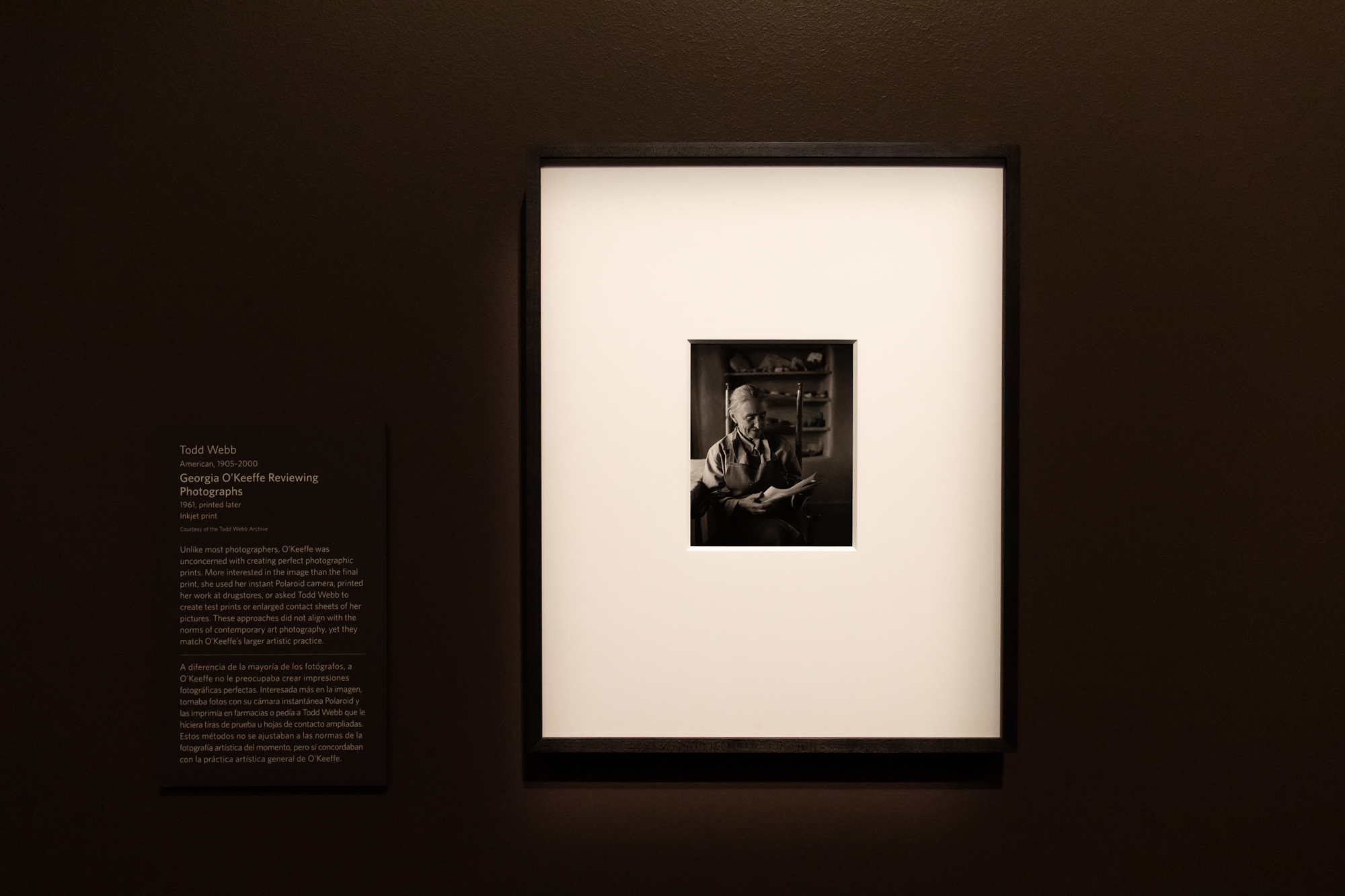
A discernible influence on modern art, many of us recognize the work of Georgia O’Keeffe through paintings of New Mexico landscapes and bright colored florals. However, the breadth of her talents expands far beyond the canvas.
“The exhibition is unique in that Georgia O’Keeffe is a world-renowned, well-known American artist for her paintings. And yet, her skillset in photography is fairly unknown by most. It has not been shown in this way before,” said DAM director Christoph Heinrich. “Georgia O’Keeffe, The Photographer offers a new glimpse into her art, her creativity and her legacy.”
Through a presentation of over 100 newly identified photographs, the four-part exhibit delves into O’Keeffe’s lesser-known love for the camera.
“This kind of photography engages a different kind of imagination than work in other media. With painting, you have the freedom to move things around… Her approach to photography was to take things as she found them and do what she could with that,” said DAM director of photography Eric Paddock. “I think it was a form of very serious creative play for her, and she seemed to have loved it.”
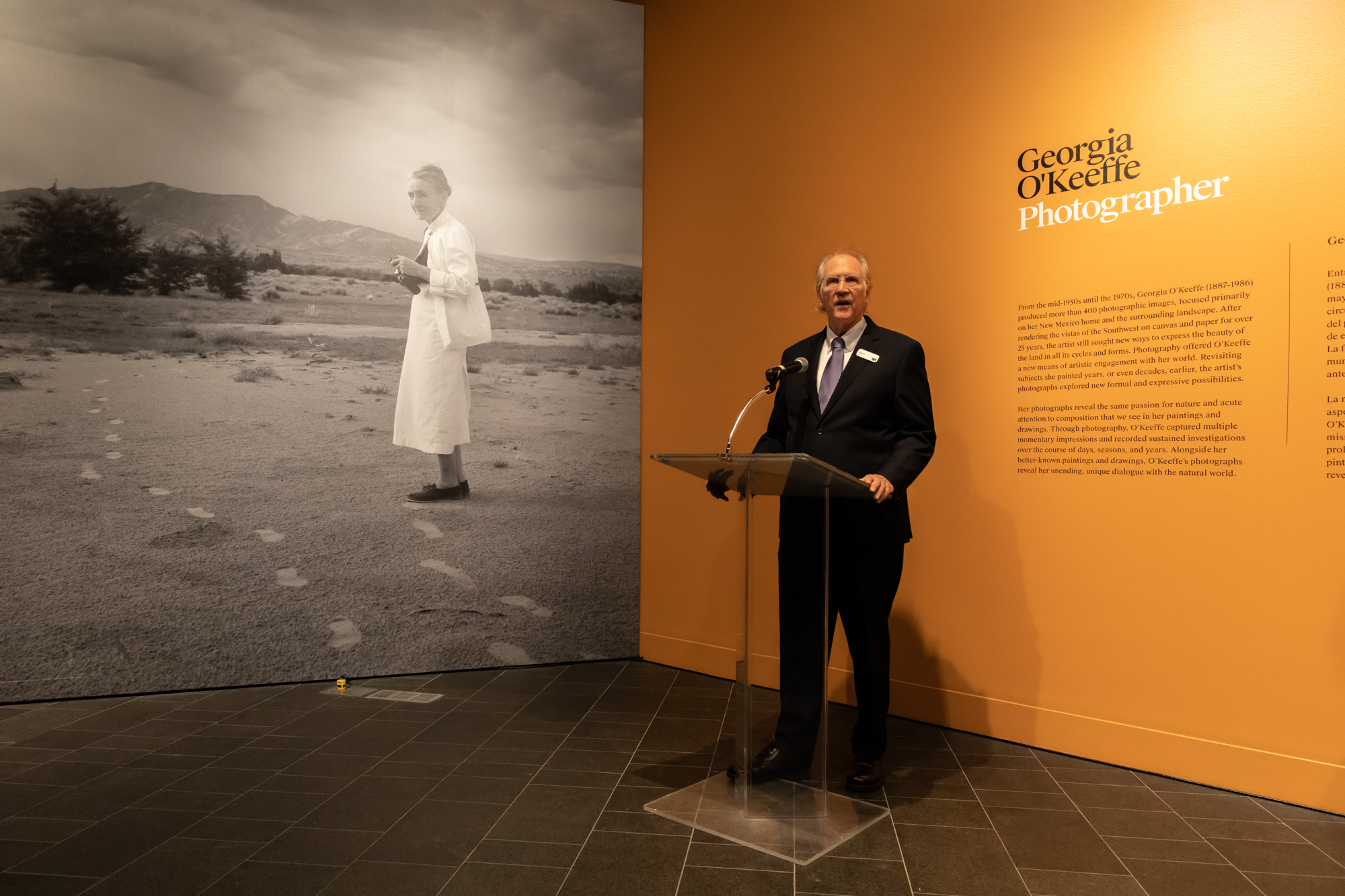
Part I: A Life in Photography
An homage to the landscapes of New Mexico that inspired much of O’Keefe’s work, the exhibits first section lies atop a stunning dusty orange. The photos tell the tales of her early days, her learning process of mastering the camera and the people that guided her in doing so.
“This part of the gallery is about friendships that were instrumental in bringing fresh light and fresh interest into her photographic work,” said Paddock.
The gallery feels very personal, a glimpse inside the experiences and relationships that shaped the painter. Much of the work focuses on her friendship with photographer Todd Webb, who encouraged O’Keeffe in her creative work and developed many of her prints. Viewers can see portraits of the pair, even handwritten notes by O’Keeffe presumed to be from conversations with Webb, detailing how to load and unload a camera, general exposure and shutter speeds.
Ten of O’Keeffe’s paintings are scattered throughout the exhibit, drawing attention to the connection between photo and painting. Resemblances are often slight, but very real. It is clear that her photographic works inspired much of her painting, and vice versa, but often not until decades later.
“That’s one of the curious things about this show. Often she photographs particular motifs, in some cases years after she painted them, which is intriguing to me because that means she was still thinking about it, still trying to solve questions of the relationships of parts of the picture,” explained Paddock. “I think the idea isn’t necessarily that every photograph informs or shapes a specific artwork and another medium. It has more to do with her persistent interest in looking at it, sorting out, understanding, not only the landscape but how to depict it.”
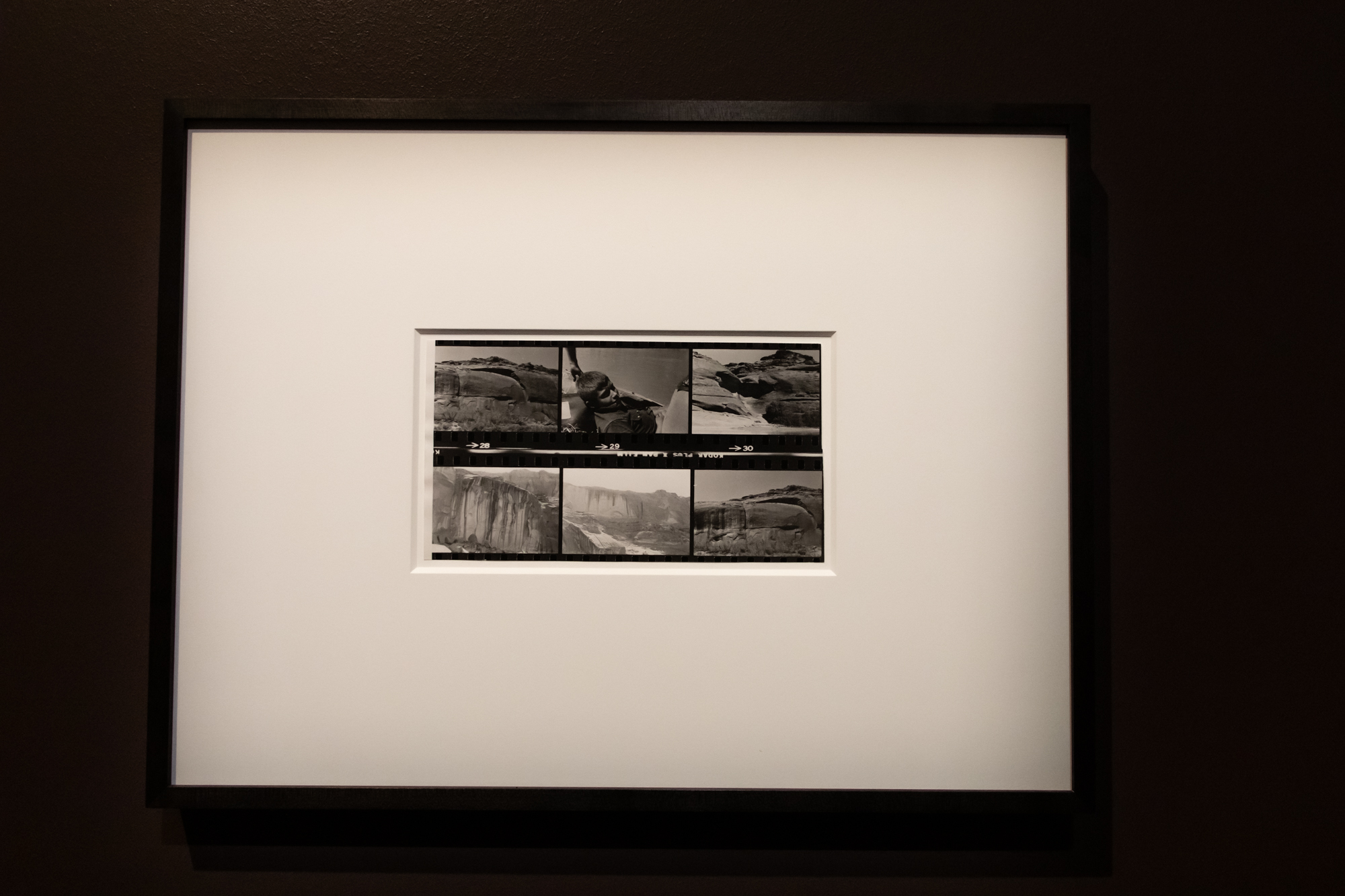
Part II: Reframing
Moving through this section of the gallery, you begin to notice a lot of the same. The photographs seem to be repeating, four photos of O’Keeffe’s front door grouped along the wall. Slowly but surely, you begin to notice the subtle differences between each picture: an inch further to the left, half a step back, and so on.
“By photographing the same thing over and over again, she’s really studying the relationship of all these parts. How does that stack of bricks relate to that slice of light coming through the building? How do the shrubs frame all of that? What about the dramatic look of the Vegas underneath the roof?” said Paddock.
It is evident that this is just a sampling of presumably dozens of photos just like them. O’Keeffe’s work uncovers an impressive obsession, exploring how easily we can change the world in front of us entirely just by changing our point of view.
The immersive section of the exhibit allows guests to experience this for themselves, transporting them to the interior patio within O’Keeffe’s own home. Complete with sounds and sights of the scenery featured in many of the photographs, guests are encouraged to make use of the rectangle and square cutouts available to reframe the scene, truly understanding how one small space can have endless views.
Part III: Light
Continuing the theme of repetition, O’Keeffe was interested in the way light shapes and alters a work. She often took photos of the same view scattered throughout the day, exploring how the ever-changing balance between sun and darkness affects what we see.
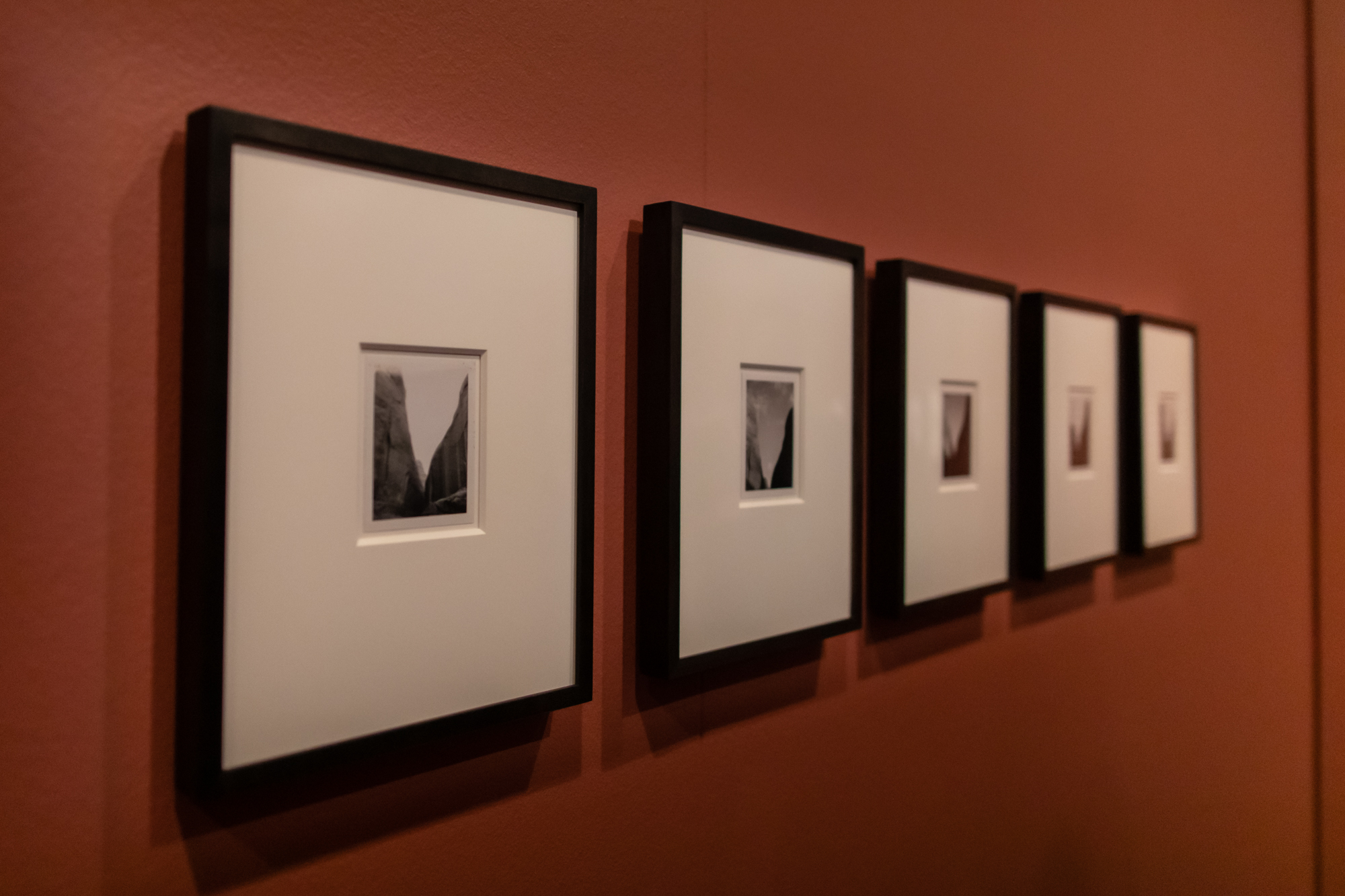
Four photos in this section stick out in particular, a series of polaroid’s taken on a rafting trip through the canyons.
“When everyone else was fixing up breakfast and pumping up the boats and tying things downs, O’Keeffe was busy looking at the light. As she watches, the sun moves, and the shadows on the canyon walls just completely change. She makes this really breathtaking series of photographs,” Paddock said.
O’Keeffe somehow formed a seemingly perfect gradient, the light moving perfectly to outline the massive canyon walls.
“One of the things that interests me is that is about the shadows, but it’s also about the shape of the sky against the edges of the rock,” said Paddock. “The kinds of figure ground relationships and tonal relationships that you find in other artwork. To me, this is an investigation that I’m sure found its way into paintings that she made.”
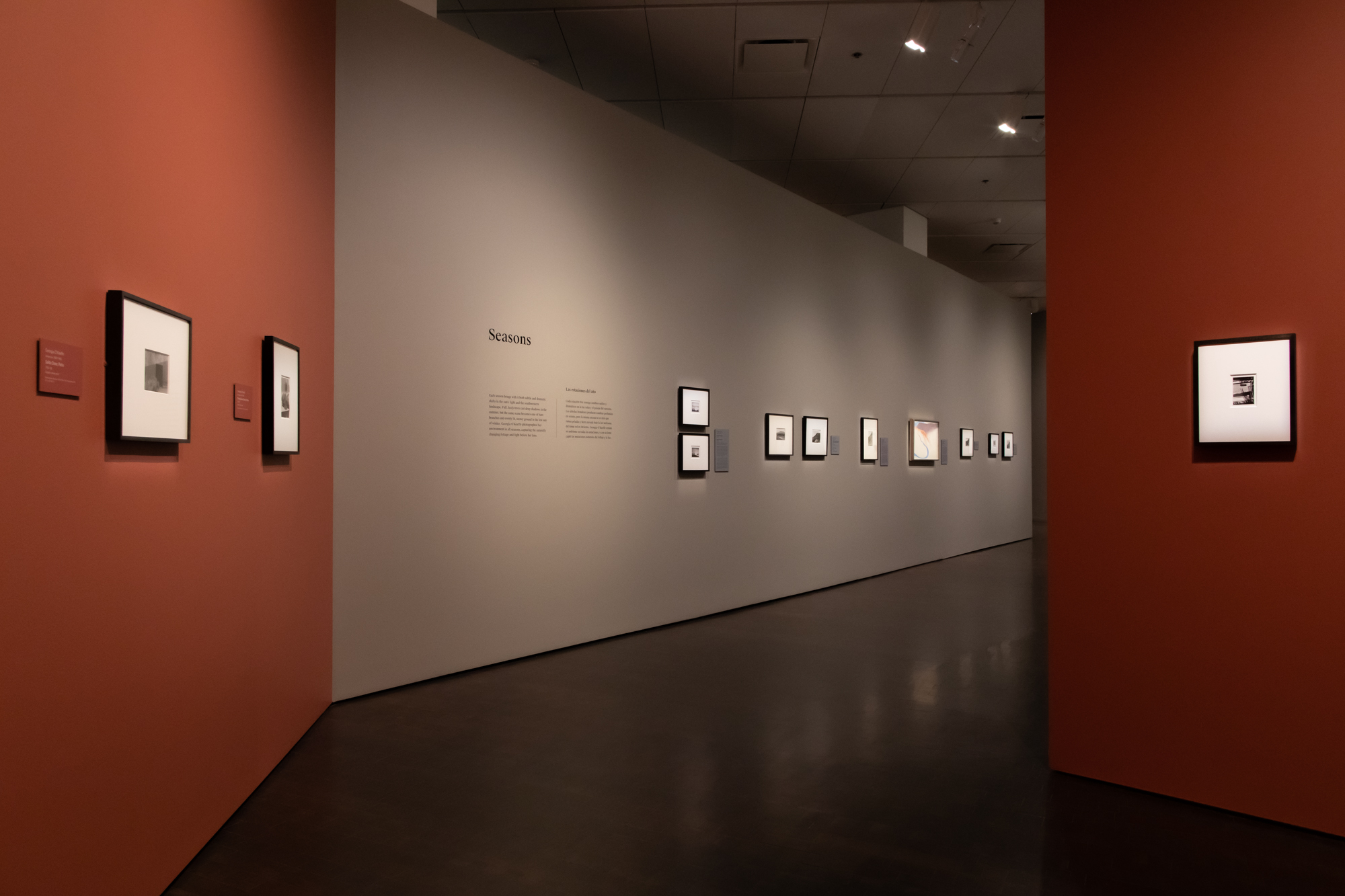
Part IV: Seasons
Many of O’Keeffe’s famous works are an ode to spring, blossoming flowers and landscapes painted in pastel hues. However, O’Keeffe was inspired by the changing of the seasons, the way the same view becomes an entirely different scene from summer to winter.
“O’Keeffe worked year-round making pictures, often of the same thing, in different lighting conditions at different times of years, to consider how the light changed, how the tonal conditions changed,” Paddock said.
From snow to sun, it is clear the way these investigations inspired both her photography and paintings. From the winding roads of mountain landscapes to the blooming of the trees, O’Keeffe understood not only the way she could manipulate a scene but was infatuated with the way the scenes can alter themselves.
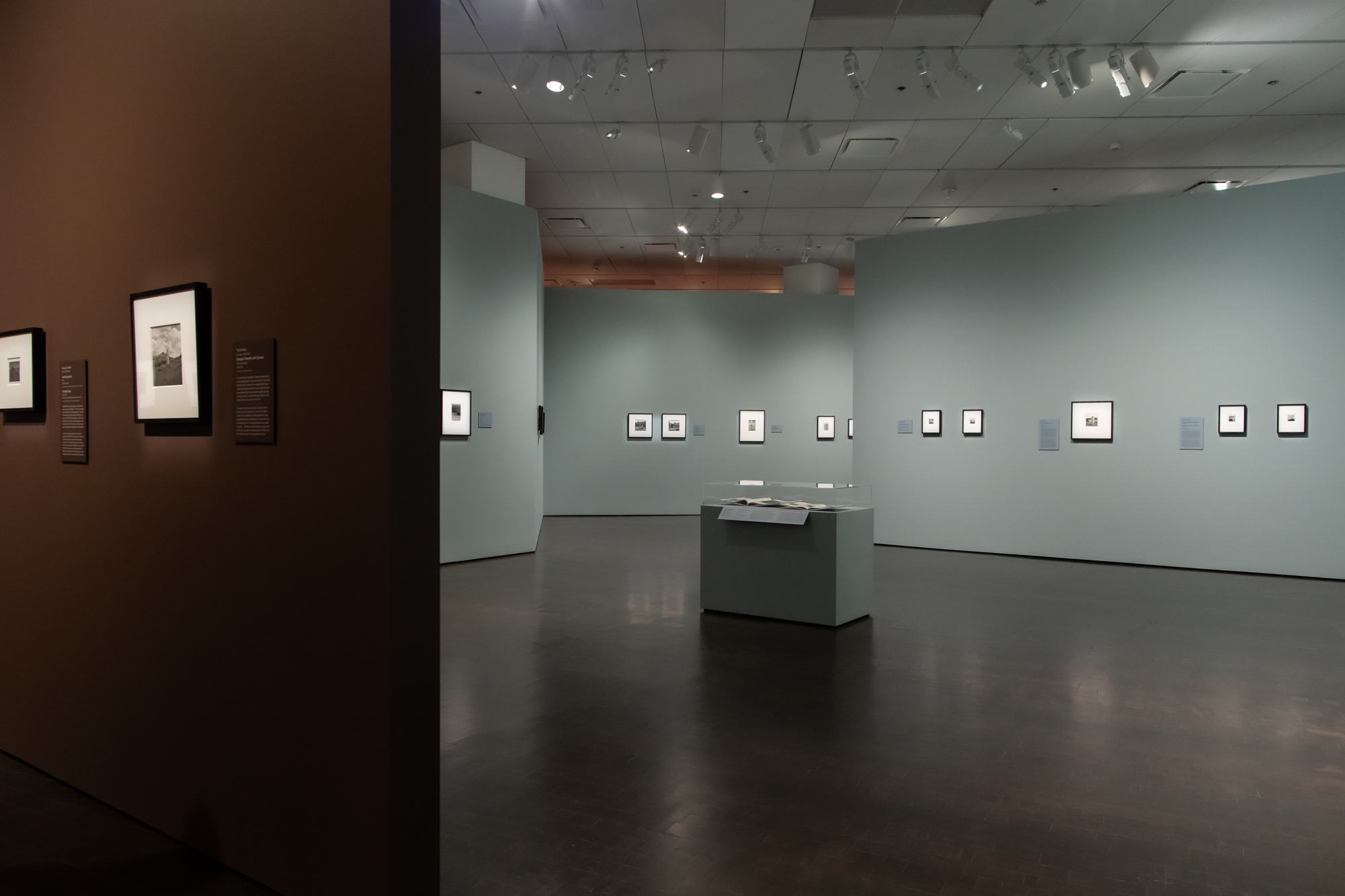
Conclusion
Georgia O’Keeffe, Photographer will find you going in circles, strolling through each section again and again, constantly noticing new resemblances, inspirations, and connections between each photograph. Engaging and utterly fascinating, the exhibit reveals the truth behind the infamous artist’s methods: Georgia O’Keeffe did not manipulate the world to make it beautiful, she simply looked at it a little differently.
“Georgia O’Keeffe, Photographer” is on view at the Denver Art Museum (100 W 14th Ave. Pkwy.
Denver) through November 6, 2022. Admittance to the museum is free to anyone under the age of 18, and $13 for adult Colorado residents. For more information, visit their website.





